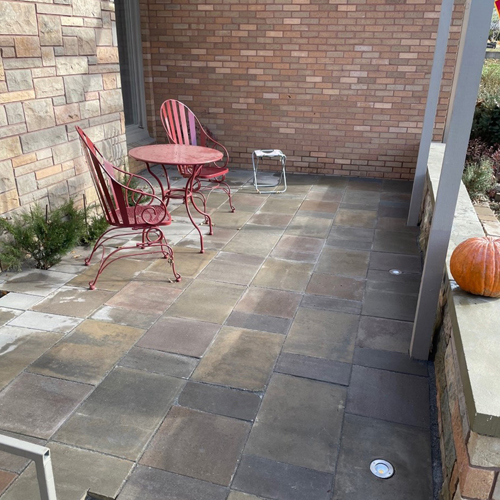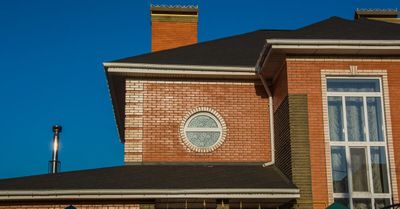Little Known Questions About Paver Installation.
Table of ContentsSee This Report about Roofing ContractorThe smart Trick of Masonry Contractor That Nobody is Talking AboutThe Ultimate Guide To Chimney SweepUnknown Facts About Chimney SweepA Biased View of TuckpointingA Biased View of Chimney Services

The acid liquifies all the carbonate-containing minerals not only in the binder, but likewise in the accumulation (such as oyster coverings, coral sands, or other carbonate-based materials), in addition to any kind of other acid-soluble products. The sand and also fine-grained acid-insoluble product is left. There are numerous variants on the simple acid digestion examination.
Easy acid food digestion approaches are fast, low-cost, and also very easy to execute, yet the details they provide regarding the original structure of a mortar is limited to the shade as well as texture of the sand. The gas collection approach offers more details about the binder than a simple acid food digestion examination. evaluation techniques that have been made use of to evaluate mortars include polarized light or thin-section microscopy, scanning electron microscopy, atomic absorption spectroscopy, X-ray diffraction, and differential thermal evaluation.
About Roofing Contractor
Historical mortars were not prepared to narrowly specified specs from materials of uniform quality; they consist of a wide variety of in your area derived materials integrated at the discernment of the mason. While a specific technique may be able to properly determine the original proportions of a lime-cement-sand mortar prepared from contemporary materials, the efficiency of that technique for reviewing historical mortars is questionable unless it has been tested against mortars prepared from products a lot more typically utilized in the past.
It is a typical error to think that firmness or high stamina is a measure of appropriateness, specifically for lime-based historic mortars. Stresses within a wall surface triggered by development, tightening, moisture migration, or negotiation should be suited somehow; in a masonry wall, these tensions ought to be relieved by the mortar as opposed to by the stonework systems.
High lime mortars are much more permeable than denser concrete mortars. Historically, mortar worked as a bed linens materialnot unlike a growth jointrather than a "glue" for the masonry systems, and also dampness had the ability to move with the mortar joints rather than the stonework devices. When moisture vaporizes from the masonry it deposits any kind of soluble salts either on the surface area as efflorescence or below the surface as subflorescence.
An Unbiased View of Tuckpointing
If the mortar does not permitmoisture or moisture vapor to move out of the wall surface and also vaporize, theresult will certainly be damage to the masonry systems. Sand is the biggest element of mortar as well as the product that provides mortar its distinct color, structure and also cohesiveness. Sand must be without contaminations, such as salts or clay.


The Definitive Guide to Tuckpointing
For repointing, portland cement must comply with ASTM C 150. White, non- discoloring portland concrete may provide a far better color match for some historical mortars than the a lot more typically available grey rose city concrete. However, it needs to not be thought, nonetheless, that white portland concrete is always appropriate for all historic buildings, considering that the original mortar might have been combined with grey concrete.
Because of this, they typically are not recommended for usage on historical stonework buildings. Hydrated lime mortars, as well as pre-blended lime putty mortars with or without a matched sand are commercially offered. Customized mortars are additionally available with color. In the majority of instances, pre-blended lime mortars having sand may not supply a specific match; nevertheless, if the job asks for overall repointing, a pre-blended lime mortar might deserve considering as long as the mortar is compatible in toughness with the stonework.
If a preblended lime mortar is to be utilized, it should contain Type S or SA hydrated lime adhering to ASTM C 207. Water ought to be click over here potableclean as well as without acids, antacid, or various other liquified natural products. Along with the shade of the sand, the appearance of the mortar is of crucial value in duplicating historic mortar.
Our Paver Installation Statements
Choice of admixtures should be made by the designer or building conservator as component of the specs, not something regularly included by the masons. Generally, contemporary chemical ingredients are unneeded and also may, actually, have damaging results in historic stonework projects. The usage of antifreeze substances is not recommended. They are not extremely efficient with high lime mortars and also might introduce salts, which may trigger efflorescence later on.
For repointing, lime must adapt ASTM C 207, Kind S, or Type SA, Hydrated Lime for Masonry Purposes. This machine-slaked lime is designed to guarantee high plasticity and water retention. The usage of quicklime which should be slaked as well as saturated by hand may have advantages over moisturized lime in some reconstruction tasks if money and time permit.
For repointing, portland concrete should satisfy ASTM C 150. White, non- tarnishing portland concrete might provide a better color match for some historical mortars than the more typically offered grey rose city concrete. It ought to not be thought, nonetheless, that white portland concrete is constantly proper for all historic buildings, because the original mortar may have been mixed with grey cement.
3 Easy Facts About Masonry Contractor Shown
Hydrated lime mortars, and also pre-blended lime putty mortars with or without a matched sand are commercially available. chimney flashing and cap repair. best site In a lot of circumstances, pre-blended lime mortars consisting of sand may not provide a specific suit; nevertheless, if the project calls for complete repointing, a pre-blended lime mortar might be worth thinking about as long as the mortar is compatible in toughness with the masonry.
In either case, if a preblended lime mortar is to be made use of, it must include Kind S or SA moisturized lime adjusting to ASTM C 207. Water needs to be potableclean and also without acids, alkalis, or various other liquified natural products. Along with the shade of the sand, the structure of the mortar is of important value in duplicating historical mortar.
The usage of antifreeze compounds is not stampcrete patio recommended. chimney flashing and cap repair. They are not really effective with high lime mortars as well as might present salts, which might cause efflorescence later.